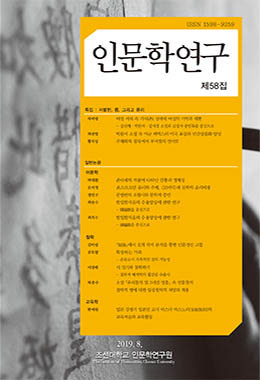17세기 인조대에서 현종대까지 궁방의 경제적 기반인 궁방전이 확대되었다. 궁방전은 無主陳荒地의 折受로 개설되는 것이 원칙이었지만, 궁방은 折受를 내세워 사실상 주인이 있는 토지인 有主民田을 침탈하였다. 한편 일반 民人 가운데 일부는 자신들이 가지고 있던 民田을 宮房에 投托하여 무거운 征賦를 모면하려고 하였다. 17세기 중반 궁방전 免稅가 확대되면서 나타난 문제 때문에 결국 궁방전 면세 결수의 定限을 설정하는 것으로 정리되었다.
17세기 후반 궁방전 折受의 혁파 문제가 시급한 현안으로 대두하였다. 궁방의 所有地로써 확보되는 田畓을 더 이상 궁방에 折給해주지 않는 것과 收稅地의 折受인 경우 免稅 조치의 철회, 또는 免稅 규모의 제한 등으로 논의가 진행되었다. 그리하여 1688년 戊辰定式이 마련되었는데 折受의 革罷, 民結免稅의 도입, 給價買得制 채택, 면세 結數의 定限을 규정한 것이었다. 1695년에 마련된 乙亥定式은 折受革罷 재확인, 民結免稅制의 정립, 給價買得制의 확인, 宮庄 마련하기 전까지 米太輸送 등의 내용을 갖고 있었다.
숙종대 후반 궁방전의 존재양태는 1719년에서 1720년에 걸쳐 실시된 三南量田 사업의 결과로 만들어진 庚子量案에서 확인된다. 경자양안을 비롯한 관련 양안에 보이는 궁방전의 主 기재방식에서 당시 궁방전을 파악하는 방식을 찾아볼 수 있다. 경자양안의 경우 諸宮家에서 給價買得하여 免稅된 곳이거나 無主處를 永賜牌받아 免稅된 이른바 ‘買得與賜牌免稅而永作宮屯’와 民結을 折受받아 면세된 곳인 有主民結免稅處, 2가지로 궁방전을 나누어 파악하는 것이었다. 이는 면세를 기준으로 삼아 궁방전을 파악하는 조정의 입장이 반영된 것이었다.
From the King Injo`s reign to King Hyeonjong`s reign, during the 17th century, royal household land was expanded as main economic base of the royal household. Basically royal household land was opened by land-cutout over wasteland of no owner. But royal household dispossessed people`s own land using cut-out land illegally. Meanwhile some people assigned his own land to royal household in order to avoid heavy burden of taxation. In the middle of the 17th century Joseon government made decision to setup the maximum limit of the tax-free land size possessed by royal household.
In the late 17th century imminent problem about royal household land was abolition of land-cutout to royal household. There were a lot of discussions about that issue, for example someone argued no more landcutout to royal household, others argued withdrawal of tax-free favor to royal household land. Therefore at 1688 Joseon government determined Regulation of Mujin Year, main contents of that contained abolition of land-cutout to royal household, introduction of tax-free over people`s own land, bargain land by payout of Joseon government. So Regulation of Eulhae Year, at 1695, reconfirmed the force of Regulation of Mujin Year, added the code of payment of cereals before arrangement of royal household land.
During 1719 and 1720, Joseon government carried out Land Survey of Gyeongja Year over Hasamdo(Chungcheong, Jeonla, Gyeongsang). We can find the method of enrollment of royal household land by examining Land Register of Gyeongja Year. There were two ways of enrollment of royal household land. The one was to enroll royal household land as his own land, and the other was to enroll royal household land as his tax-free land over people`s own land.


